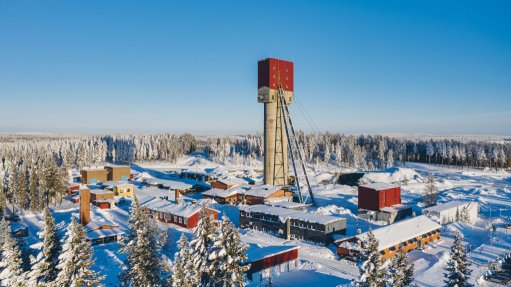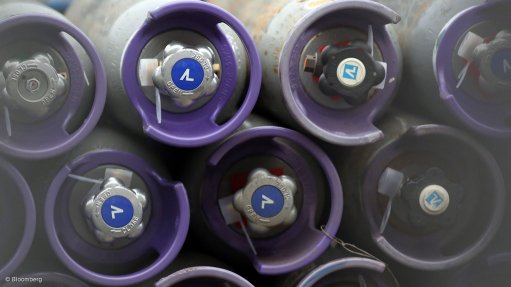Completion of Sasol’s Shondoni mine project slated for late 2016
Construction on the Shondoni coal mine, located in Secunda, Mpumalanga, being undertaken by project delivery and consulting services company WorleyParsons South Africa, is expected to be completed by late 2016.
The engineering, procurement and construction management services (EPCM) contract forms part of a R15.3-billion project undertaken by Sasol Mining to replace three of its ageing coal mines in the Secunda area.
On completion of the upgrade, the three mines will be capable of supplying Sasol’s Synfuels complex with 42-million tonnes of coal a year, transforming the Secunda area into one of the largest underground coal complexes in the world.
The Shondoni mine is a strategic project for Sasol, replacing the Middelbult mine and protecting the baseline feedstock for the coal-to-liquids (CTL) operations within Sasol Synfuels.
Construction on the Shondoni mine began in May 2013. The new Shondoni underground facility will be a fully operational and functional coal mine, complete with all infrastructure, services and equipment, both surface and underground, to support 9.2-million tonnes a year of coal production, with an expected life-of-mine of 30 years.
WorleyParsons’ scope of work over the 45-month EPCM contract includes design through delivery of an incline conveyor shaft, an underground equalising surge facility, a man and material shaft complete with winders, a ventilation shaft with three 350-m3/s main fans, and allowance for underground capital infrastructure to support the mine. Other major packages are the main surface civil infrastructure, as well as an extensive materials handling system, which includes a 21 km overland conveyor.
Last month marked a critical and ground-breaking point in the project, with the strategic and highly technical lift and positioning of the mine’s winder house taking place.
WorleyParsons project area manager for the Shondoni mining package Malcolm Bentley says what made this particular portion of the operation so unique is that the Koepe winders were installed into the winder house on the ground, concurrent with sinking and equipment activities on the main shaft.
“This is something that has not happened before on any similar projects or designs. “The original schedule and methodology allowed for the winder house to be lifted in two parts onto the top of the headgear, followed by the winder installation, which takes several months,” he says.
Lifting the winder house as a fully installed unit, as opposed to moving it in two parts, and only then installing the winders as is the norm, will recover at least three months of time that has been lost during the sinking of the main and decline shafts, which was mostly due to groundwater challenges and poor ground conditions.
“The lifting and mounting of the winder house was a crucial stage in the surface infrastructure development that required intricate planning owing to the high risk implications associated with this extreme hoist and the level of accuracy needed to align the winder house onto the existing headgear,” he notes.
The massive winder house, which includes rigging, weighing 291 t, was moved by crane across 58 m and hoisted to a height of over 30 m before finally being positioned on top of the headgear.
Bentley says, while heavier crane lifts have been successfully achieved in South Africa, what made this process different and challengingwas the size of the winder house, making it highly vulnerable to climatic conditions.
“It was vital that there was minimal wind on the day of the hoist; moderate to strong winds could have created a force on the building, placing the lift at risk,” he explains.
The hoisting and positioning of the winder house began early in August and took an hour and a half from start of lift to commissioning position.
Bentley explained that once successfully positioned, the winder house was precisely surveyed before hydraulic arms were used to micro-shift the headgear around until the winders were perfectly aligned with the shaft, and finally fastening the unit to the headgear the following day.
The winder house is expected to be fully licensed and operational in early November, with the completed 11.7-m-diameter main shaft system fully operational in January next year, reaching a total shaft depth of 155 m. The shaft conveyance will be licensed to hold up to 200 people and to carry a load of up to 65 t.
Comments
Press Office
Announcements
What's On
Subscribe to improve your user experience...
Option 1 (equivalent of R125 a month):
Receive a weekly copy of Creamer Media's Engineering News & Mining Weekly magazine
(print copy for those in South Africa and e-magazine for those outside of South Africa)
Receive daily email newsletters
Access to full search results
Access archive of magazine back copies
Access to Projects in Progress
Access to ONE Research Report of your choice in PDF format
Option 2 (equivalent of R375 a month):
All benefits from Option 1
PLUS
Access to Creamer Media's Research Channel Africa for ALL Research Reports, in PDF format, on various industrial and mining sectors
including Electricity; Water; Energy Transition; Hydrogen; Roads, Rail and Ports; Coal; Gold; Platinum; Battery Metals; etc.
Already a subscriber?
Forgotten your password?
Receive weekly copy of Creamer Media's Engineering News & Mining Weekly magazine (print copy for those in South Africa and e-magazine for those outside of South Africa)
➕
Recieve daily email newsletters
➕
Access to full search results
➕
Access archive of magazine back copies
➕
Access to Projects in Progress
➕
Access to ONE Research Report of your choice in PDF format
RESEARCH CHANNEL AFRICA
R4500 (equivalent of R375 a month)
SUBSCRIBEAll benefits from Option 1
➕
Access to Creamer Media's Research Channel Africa for ALL Research Reports on various industrial and mining sectors, in PDF format, including on:
Electricity
➕
Water
➕
Energy Transition
➕
Hydrogen
➕
Roads, Rail and Ports
➕
Coal
➕
Gold
➕
Platinum
➕
Battery Metals
➕
etc.
Receive all benefits from Option 1 or Option 2 delivered to numerous people at your company
➕
Multiple User names and Passwords for simultaneous log-ins
➕
Intranet integration access to all in your organisation


















